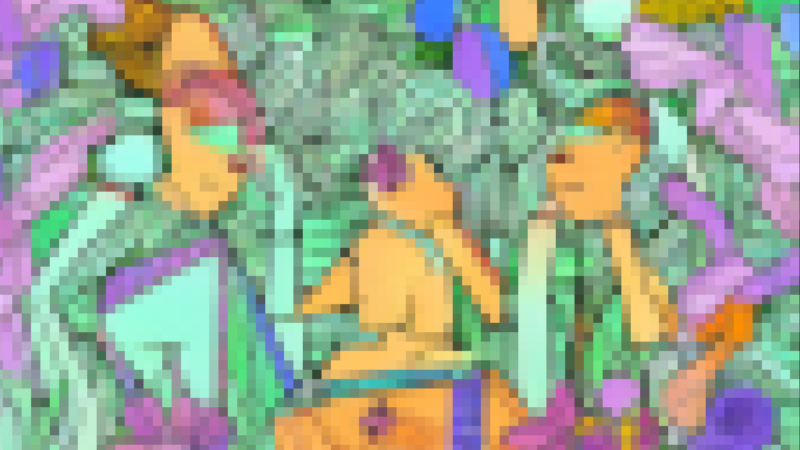June 15, 2021
The technologies we invent rarely present us with radically new phenomena. There is nothing new under the sun, really. Instead, technologies typically wield influence by organizing existing phenomena into new patterns. Patterns are brought to bear on our consciousness and sense experience in new ways determined by how the individual or society structures their relationship with the technology.
Phonography, photography, and cinematography are examples of these technologies. Sound, sight or the combination of both are hardly novel sense experiences. The compression of these phenomena into discrete objects for observation, however, introduces a novel method for perceiving phenomena that we were already capable of perceiving.
But there is one unique phenomena that technologies like phonography, photography, and cinema allow us to capture which we were not previously capable of perceiving from the outside: our self.
In Being and Nothingness, Sartre writes an extended discourse on the complexity of what it means to be perceived by others—le regard. The “look” or “gaze” is a fixture among 20th century French intellectuals. Sartre hardly engages in the most comprehensive reflection on it, but he offers us one of the most helpful allegories for understanding the problem we are faced with by the gaze.
Consider, you are sat in a park. On a bench across the path from you maybe twenty paces down sits a man. But you look around to consider the world. The gravel in the path, the wood of the park bench, the birds among the trees—all of these present to you as objects which constitute the system of a universe which feels centered around you. You move around and the phenomena presented move with you. You watch the man on the bench read a newspaper fully absorbed in his task. He and his paper appear to you as objects as well.
Suddenly, the man looks up from his paper at you. In an instant, the stability of the entire world has been torn asunder. By the phenomena of his eyes—and the probability that behind his eyes he possesses a consciousness similar to yours—you become intimately aware that you are also an object in his world. Moments ago, the world was a system of objects organized around the experience of your subjectivity. Suddenly your subjectivity—what feels to you as a boundless, infinite hole at the center of the universe—is seen from the outside, enclosed in the object of a body as perceived by this man’s subjectivity.
Cinematography is a technology among technologies which present to us the phenomena which are already present to us in the world. Save, of course, for ourselves. The shift is not black and white, but the introduction of cinematography presents to us an important pivot point in the history of technologies which radically restructure our capacity to relate to our-selves and reconfigure processes of identity formation.
Consider this video as it is: a eulogy.
In the 1890s, moving picture capture technology advanced with the work of a variety of inventors. In this case, we watched the original presentation of Auguste and Louis Lumière’s first projected films. In contradistinction to their contemporary Thomas Edison’s kinetoscope, the Lumières’ technology favored the viewing of un-staged life (actualitès) in a public projected setting.
So who or what are we eulogizing? Plainly: the self free from a universally accepted technology for self-objectification.
This film captures a virginal beauty, simultaneously begotten and unmade at the introduction of the cinèmatographe. The Lumiéres present us a technology which so compellingly re-presents the phenomena of life, it is adopted as a tool to re-produce and re-create the terms of the life itself captured. Watch them closely, these individuals. Who, from the perspective of the twenty-first century you will never perceive again. We eulogize the Homo sapiens who knew nothing of the weighty gaze of history that would look on them.
The cinèmatographe finally introduces us to ourselves as an object. More precisely, it presents the audience of which I am a part (the we, i.e. Heidegger’s being-with-others) with the phenomena of my-self. (In reality, it presents to us our-self as a cinematographic-object, but the difference between the self-as-object and the self-as-cinematographic-object is a subject for another study.) The way in which we are presented back to ourselves becomes a totalizing and peremptory phenomena to which we must attend as a part of a unity with the audience. An audience, in this way, is composed of a multiplicity of subjectivities: my-self, possibly and individual others, the subjectivity we approximate as a mean of the whole audience, and everything in between.
In Sartre’s world, the self becomes an object in a world whose center disappears beyond the horizon of the other’s subjectivity. Existence becomes terrorized by the impenetrability of the other’s gaze.
In the Lumières’ world, the self becomes captured in a cinematographic-object which can be independently and simultaneously viewed by a multiplicity of subjectivities—a self, an other, peers, past, present, future, and everything in between.
In Sartre’s world, the other’s gaze is a demonic terror from which there is no exit.
In the Lumiéres’ world, the self is an object capable of being identified with from the outside. It can be perceived and consequently curated independently, mimetically and iteratively by my own subjectivity, to which it relates as an uncanny likeness.
The two are not entirely commensurable. Whereas the gaze for Sartre is an event that occurs in the secret subjectivity of the other, the cinematic gaze is fluid, free-floating, unstable and uncoupled from any concrete identifier such as an embodied subjectivity. Instead, it exists everywhere and nowhere. Universal acceptance and proliferation of this technology alters my very nature before it contacts it by controlling the marketplace for technologies available to me for identity formation.
Picture a yellow onion. Its beige, glossy striped skin spread in a thin screen over white flesh, sent out from a spindly, weedy tip. Its flesh bottlenecks at a nib where the stem used to obtrude. The onion and the same onion-with-knife-in-hand are two radically different onions. The knife, importantly, did not change the onion. I changed the onion as a result of the knife. Or, more precisely, the existence of the knife—my memory and experience of its sharp edge—are brought to bear on my approach to the onion.
Now consider the onion again, freighted with all its iterations. It’s no longer the onion of a chimpanzee without a knife; peeled, and smashed under fingernails or crushed and simmered in a watery pot until soft. The onion you know is the onion of a person with a knife: sliced thin tangential to its layers or diced across it into large rectangles; minced precisely into 2mm cubes and maybe crushed into a gritty paste; cross-sectioned into concentric circles, thin and spiraling into straws or thick, rigid hoops. Even before the blade touches the skin, the knife has permanently augmented the onion.
What the knife did to the onion is not unlike what these technologies have done to the self.
There is no radical discontinuity between life with cinematography and life without. Technologies of selfhood have always been present. The phonograph, photograph, and cinèmatographe are not unique. What has changed, though, is the suffusive proliferation of technologies of selfhood. These technologies are employed to replace and liberate us from the social and institutional forces which have historically monopolized the market of identity formation. All media and media forms function as technologies of self which extend and augment our experience of consciousness and its relation to other objects and subjectivities.
The totalizing gaze no longer comes on to me by a presence, but by the fusion of my-self and the other into an always-already audience which perceives me as an object. By this fusion, I become a member of my own audience. And wherever I am, my audience is too, though not all of it. This is the post-cinematic anxiety of selfhood—my audience is always present but never complete. I possess a great power to judge, recreate and re-present my-self as object, but never the quorum to permit the judgement stand.
As we increasingly use these technologies to understand, form, and re-form our own identities, we soon become aware that the great white throne of judgment is empty and that’s what frightens us. The throne leers, but no one occupies it. Instead, some chimeric phantasm of the mean audience members manifests in a vapor: ourselves, others we know, others we don’t know, and the multiplicity of the unstable aggregations latticed in between. What appears first as a reliable technology for self-determinant identity formation soon accelerates into an evanescent marble run, suspended among matrices of identification and recognition which vanish as quickly as they appear.
The technologies that freed us to explore with the fluidity of identity, rendered those same identities too unstable for us to securely relate.




